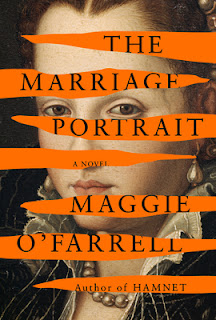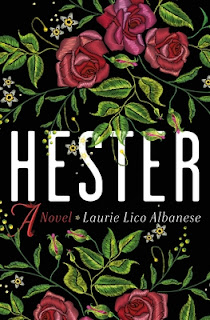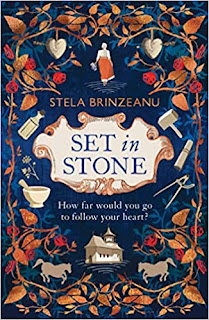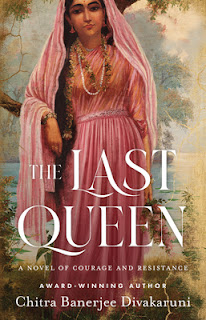Please help me welcome debut novelist Adele Holmes, who has a guest post about the steps she took in getting started with research for Winter's Reckoning (She Writes Press, Aug. 9). There are many good tips and recommended sites included here!
~
Beginning Research for Historical Fiction
Adele Holmes, M.D.
There is so much to consider when writing historical fiction. Where is one to begin with the research? In this post, I will share how I gleaned historical information for my debut novel,
Winter’s Reckoning, set in the Southern Appalachians in 1917.
The key takeaway from the first paragraph might be the word “debut.” I’d never written a novel before, so I’d never had to figure how to gather the historical facts. Like most of us, I turned to reading a textbook about it and also taking an online course. The course was through Writers Digest University, and the instructor was Donna Russo Morin. The textbook, recommended by Ms. Morin, was
How to Write and Sell Historical Fiction, by Persia Woolley. These were valuable in my process, and I strongly recommend this as a minimum base for other newbies in the field.
The next step I took was to prepare a skeleton outline of the historical information I would need. My novel was set in the rural Appalachians, but it also referred to Boston quite a bit. These are both places I’d visited frequently, so I knew what they were like now—but what about in 1917? I did elaborate web searches on roads, railroads, housing, schools, etc. There’s so much information here that it is not able to be covered adequately in a short writing, but the reader will be familiar with the rabbit holes internet searches can take them into. Remember to leave a trail of breadcrumbs and also use only trusted, well-vetted sites.
After much consideration of my skeletal outline, these were the areas I decided I needed to look into, in no specific order:
1) Utilities. Turns out that electricity was in fact in place in Boston, but not in the rural South. After scrolling through several sites, I decided that this one was best for all things electrical
https://www.instituteforenergyresearch.org/history-electricity/ I’ve bookmarked it for future use. And so my stockpile of reliable information was begun. Likewise, for most of my scenes, plumbing was unheard of—though in the cities it was commonplace.
2) Clothing. This is a very easy on-line find, and searching old catalog pictures can get the creative juices flowing. In fact, perusing old photos of-the-time caused me to turn one of my characters into a classic Gibson girl. It will be up to the author to make sure the trend is appropriate for the setting, i.e., country mouse vs city slicker.
3) Literature. As novels are frequently referenced in
Winter’s Reckoning, I turned to an old favorite of mine,
https://www.abebooks.com. Here I was able to see the covers of
Alice’s Adventures in Wonderland, and the very first set of World Books. I even found a copy of the page on Pasteur that I needed to tell about in the story, and used the page number in dialogue in the novel. That’s pretty authentic!
4) Medicine. Being a physician, I was well linked-in to research sites for medicine, including medicine from that era. But I had to refresh myself on things such as when antibiotics were first used, etc. A quick google search of trusted medical sites gave straightforward answers. But finding the herbal substitute for medical treatment was a whole different ballgame. I spent days and weeks reading modern and old books on herbalism, and purchased a book that was very useful to show what plants grow in what areas of the US.
5) Legal issues/amendments to the constitution/laws.
https://scholar.google.com led me to all the information I needed. I read, printed, reviewed several articles regarding not only the passage of the pertinent amendments to my novel (13th, 15th, 19th), but also the Jim Crow Laws.
6) Transportation. I like to visit the Smithsonian Museums in D.C. whenever possible. Their historical information for the US is phenomenal, and you get to see so much, making your prose so much more genuine. Most of my transportation research for this novel was gathered at a visit to the National Museum of American History. When a visit is not possible, there is a ton of information shared online through their links at
https://www.si.edu. Often world information outside of the US is also available. For example there is currently a Tibetan Buddhist Shrine Room Exhibit that is completely viewable online.
The above list is the overarching information I needed to gather to begin to write my historical novel—yours will be quite different, depending on the setting of your book. I give this as an example only. The point is that I felt I must find out a lot about a few things, then I could fill in the remainder of the research needed as I came across it. For instance, I didn’t even know I was going to have a newspaper as a focus of my book. When one jumped right onto the page, I took a couple of days off to learn about newspaper history, linotype machines, etc. You’ll find areas to stop and research, too.
But don’t get lost in the rabbit holes! And remember: leave a trail of breadcrumbs and visit only trusted, well-vetted sites. After your first novel, you’ll have your own collection to go back to.
~
About the novel:
In the 1917 Southern Appalachians, Maddie’s herbal healing is welcome, though people disagree with her belief in equal rights for all. Then a new preacher arrives, igniting racial tensions and accusing her of witchcraft. Threatened and knowing others are at risk, Maddie hesitates. What does she risk in taking a stand? What does she risk if she doesn’t?
About the author:
 |
Adele Holmes, M.D.
(credit: Lori Sparkman Photography) |
Adele Holmes graduated from medical school in 1993. After twenty-plus years in private practice pediatrics, her unquenchable desire to wander the world, write, and give back to the community led her to retire from medicine. Her fun-loving family includes a rollicking crew of her husband Chris, two adult children and their spouses, five grandchildren of diverse ages and talents, a horse, and a Bernedoodle. Winter’s Reckoning, Adele’s debut novel, won Honorable Mention in the 2021 William Faulkner Literary Competition. She is currently at work on her second novel in her resident town of Little Rock, Arkansas.
Find her online at the following:





































.png)
